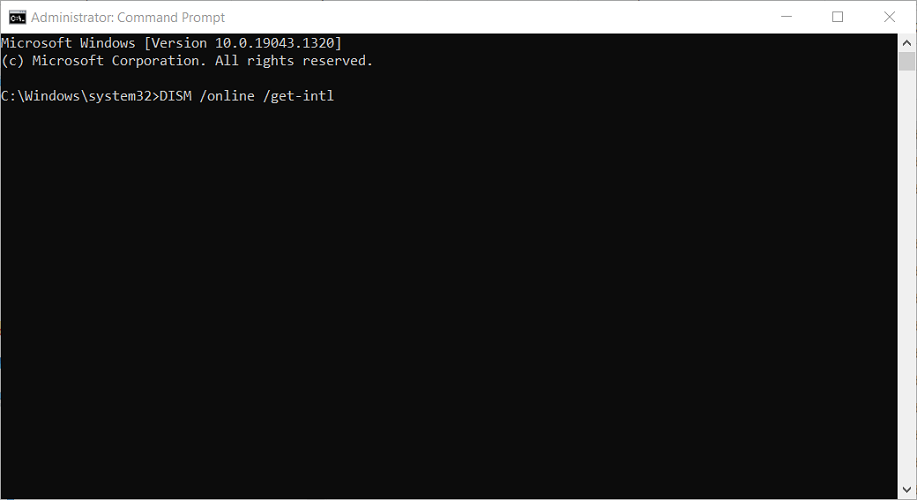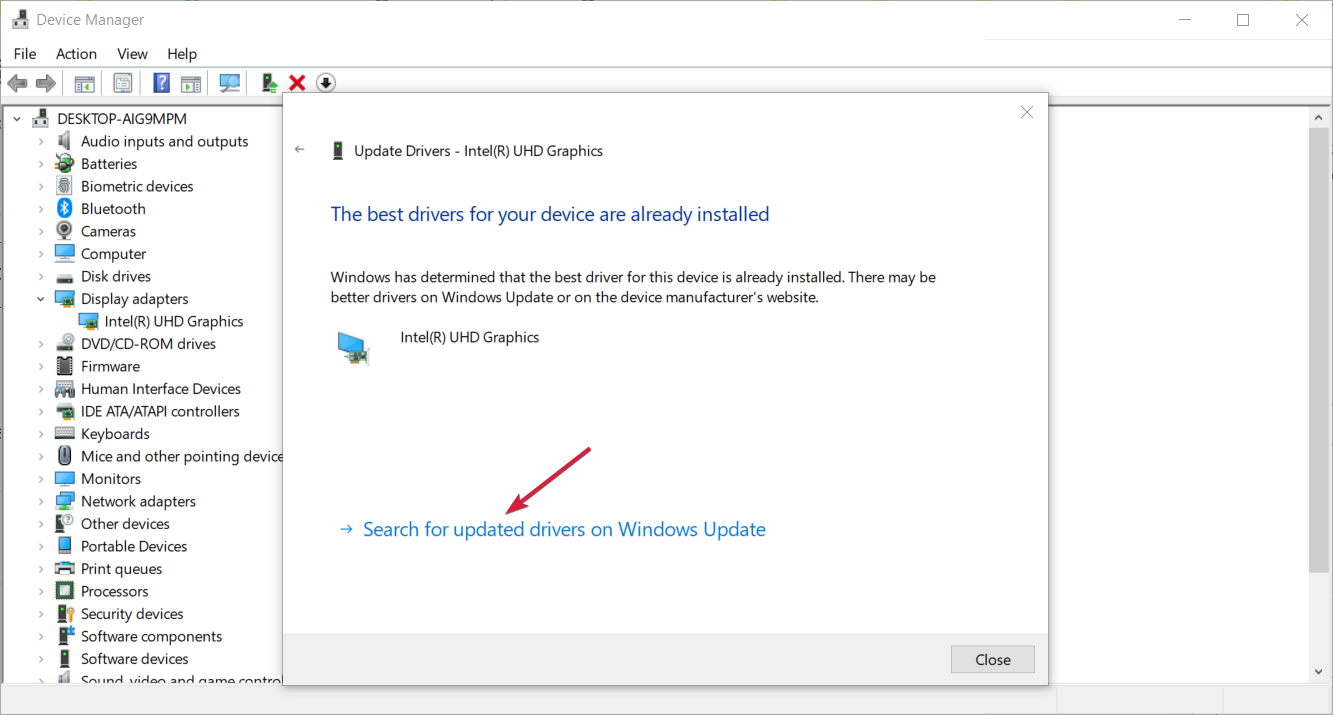
- If you get the error: You can’t keep Windows settings, personal files, and apps, that means you will lose your data when upgrading the OS.
- This can be caused by a trivial problem like the language settings of your system.
- Corrupted or problematic drivers can also produce this issue so make sure you update them.
Why is Keep personal files and apps greyed out Windows 11 and 10?
In case you notice that your Windows default apps are missing, it’s possible that this issue is causing this problem.
This isn’t the only feature that can go missing, and many reported that Windows Update is not showing on their PC as well.
Problems such as grayed out Windows apps are caused by corrupted installation, so you might have to repair it to fix this problem.
What are the variations of this error?
This can be a big problem, and our readers also reported the following variations:
- Keep personal files and apps greyed out – Many users said that the option to keep their personal files and apps is disabled while upgrading to a new version of Windows 10. This can be a serious inconvenience, but you should be able to fix it using one of our solutions.
- You can’t keep Windows settings personal files and apps because your current version, unsupported directory, different language – There are many reasons that can prevent you from upgrading to a new version of Windows. In most cases, they’re related to your system language or locale.
- You can’t keep Windows settings registry – This error can appear if you change the location of your Program Files or user account directory. However, you can fix this problem by making a couple of changes in your registry.
These can turn into a huge problem, but there are some ways to fix them. Check them out below.
How can I fix Windows settings, personal files, and apps error?
1. Check your system language
- Click the Start button, type cmd, and select Run as administrator to run Command Prompt with full privileges.

- When Command Prompt starts, enter the following command and press Enter:
DISM /online /get-intl
3. You should see your operating system language in the Default system UI language section.

4. Insert Windows 10 DVD or a bootable USB drive and boot your computer from it.
5. Choose the Repair option.

6. Select Troubleshoot.

7. Click on Advanced options.

8. Select Command Prompt.

9. When Command Prompt starts, enter the following and press Enter to run it:
DISM /image:C: /set-uilang:en-US
10. This will set your system language to en-US and you’ll be able to keep your files when you upgrade to Windows 10. If en-US doesn’t work, you might have to set your language, so it matches the language from the Windows 10 ISO.
You might get the You can’t keep Windows settings, personal files, and apps message if your system language doesn’t match the language on Windows 10 ISO. To change the system language, do as described above.
2. Update your drivers
- Right-click the Windows button and select Device Manager from the list.
- Expand the Display adapters section, then right-click the driver and select Update driver.

- Choose Search automatically for drivers.

- If the system detects a new one, it will install it and you will be prompted for a restart. If it doesn’t, click on Search for updated drivers on Windows Update.
- You will be redirected to Windows Update. Click on the Check for updates button.

- If the system doesn’t find new updates, click on View optional updates.

7. Expand the Driver updates section and check if there are any updates related to your graphics card, click their box, and hit the Download and install button below.

Drivers are a crucial part of Windows, and without drivers, you won’t be able to use your hardware properly.
Speaking of drivers, several users reported that the You can’t keep Windows settings personal files and apps error was caused by outdated drivers.
According to them, their graphics card driver was out of date, and that caused this problem to appear. To fix the issue, update your graphics card driver to the latest version and check if this makes any difference.
Keep in mind that other drivers can also cause this problem, so be sure that all your drivers are up to date before you try to upgrade.
3. Change system locale from Control Panel
- Open Control Panel and go to Region.

Go to the Administrative tab and click on Change system locale.
Set Current system locale to English (United States) and click OK to save changes.
Click Apply and OK in the Region window.
Restart your computer and try to upgrade to Windows 10 again.
5. Download the Windows 10 version that matches your system language
You can’t keep Windows settings, personal files, and apps message appears during Windows 10 setup when the language from your previous operating system doesn’t match the one on your Windows 10 ISO file.
We showed you how to change your system language in order to install Windows 10, but what if you wish to keep your current system language?
If you don’t want to switch your system language to US English, you can simply download the Windows 10 ISO that uses the same language as your current operating system.
To do that, just download the Media Creation Tool and choose the desired language from the list of languages.
6. Remove any additional non-English languages
If you can’t keep your files from the previous version of Windows, perhaps you should try removing any other installed languages.
After you’ve removed all additional languages besides English, try installing Windows 10 again. This might not be the best solution, but it works according to users, so you might want to try it out.
7. Remove your antivirus
Sometimes the main cause for You can’t keep Windows settings personal files and apps error is your antivirus.
Even though antivirus software is important, sometimes it can interfere with Windows and cause this problem to appear.
To fix the problem, it’s advised that you disable your antivirus completely. If the issue persists, you might be able to solve it simply by uninstalling your antivirus software.
If you’re using any antivirus solution and you want to get rid of it, be sure to check out this amazing list with the best uninstaller software you can use right now.
If removing the antivirus solves the problem, you might want to consider switching to a different antivirus in the future. There are many great antivirus solutions that are offering advanced security features and are also compatible with all versions of Windows 10.
8. Check your registry
Press Windows key + R and enter regedit. Press Enter or click OK.
In the left panel, navigate to the following key:
Computer\HKEY_LOCAL_MACHINE\SOFTWARE\Microsoft\Windows\CurrentVersion
In the right panel, locate ProgramFilesDir, Program FilesDir (x86), ProgramFilesPath, and ProgramW6432Dir. Check the data values for these strings. If you changed the location of the Program Files directory, the values should look like X:\Program Files. To fix that, open each of these strings and change the drive letter to C.

According to users, you can sometimes encounter You can’t keep Windows settings personal files and apps message due to your registry settings.
Several users reported that they changed the location of the Program Files directory, and that caused this issue to appear. However, you can fix the problem by doing as described above.
After making changes to your registry, try to upgrade your Windows again and check if the problem reappears.
9. Check the location of user account directory
If you’re trying to install a new version of Windows, you might encounter the error: You can’t keep Windows settings personal files and apps. This can appear if your user account directory is moved.
While installing a new version of Windows, your user account directory is needed in order to create a backup of your files.
If this directory is moved or missing, you won’t be able to upgrade and you’ll encounter this problem.
However, you can fix the issue simply by moving your user account directory to the C: Users folder on your PC. After doing that, you should be able to upgrade without any problems.
10. Change your product key or edition
- Open the Settings app. You can do that quickly by pressing Windows key + I.
- When the Settings app opens, go to the System section.

3.Navigate to About section in the menu on the left. Now select Change product key or upgrade your edition of Windows.

4. Click on Change product key.
5. Now enter the product key for the version of Windows you’re upgrading to.
Sources : Windowsreport.com


[…] Картинка с сайта: tips2fix.com […]